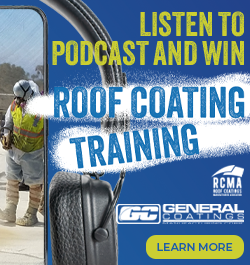World Class in Safety – Part Three

Learn about all of the key components of a great safety management system, including how to document activities and perform a gap analysis.
In Part Three, we will continue discussing implementing a safety management system (SMS). Please refer to Parts One and two if you are new to this series.
Document activities
Documentation is a key element of any SMS. Well-managed documentation and records fulfill regulatory requirements and demonstrate due diligence when your company may be subject to legal action. But, more importantly, documentation provides the framework for continuous improvements and improving the SMS's effectiveness and your company's safety performance.
Documentation and records management must be simple and easy for the best results. It must also be consistent with our industry's regulatory and business requirements. Listed below are some typical records and activities that must be appropriately documented and recorded:
- Training and competency assessments
- Audits and inspections
- Equipment inspection
- Incidents and accidents
- Incidents and accidents investigation reports and remedial actions and closeout history
- Standard operating procedures
- Codes of practices and corporate policies
- Management of change records and action items closeout listings
This is not an all-inclusive list. Your company may need to add additional items to comply with your area's regulations and company policies.
Internal controls developed and activated
To be effective, your SMS requires adequate internal controls to ensure compliance with the standards, procedures, policies, and codes of practice. Simple tools must be available to all users to enable application and compliance with the SMS requirements. Internal control measures should alert leadership of non-compliance and the required remedial actions to promote compliance. Checks and balances must be designed to support, rather than avoid, compliance.
For example, the recording and trending of near misses are crucial in preventing an accident or incident. Internal controls also include reports on SMART variables to help leadership determine compliance and initiate corrective actions. As a reminder, the SMART principle reflects the following:
- S — Specific
- M — Measurable
- A — Achievable
- R — Realistic
- T — Traceable and time bounded
Such reports may include both leading and lagging indicators. An example of a SMART report is demonstrated in personnel training records. It may show the amounts of personnel trained over a fixed period. Using a training matrix is an easy method for conveying this information. A training matrix provides a snapshot of all groups at the project site, the training required, and the status of each individual's training at a point in time. A training information matrix can be reviewed quickly to assess all personnel's training, qualification, and competency progress.
A good business practice is the audit review on some fixed frequency to identify improvement opportunities for the internal control measures of the SMS, such as a one to three-year frequency. Performing such audits will identify improvement opportunities and suggested actions for gap closure.
Sustainable process development
Once the SMS is rolled out and functioning, a process for maintenance and continuous improvements is required to move your company from regulatory compliance to world-class safety status consistent with your vision. Put a team together for this purpose to ensure continued progress. The team should include a company management representative, safety-motivated employees, and a subject matter expert.
A predetermined agenda should be created for the team that lists members, expertise, management representation, deliverables, authority, accessible resources and timelines. It should also reflect meeting frequencies and the need for documentation.
Performance management
A final component of the SMS is performance management. While the focus on leading indicators helps improve overall safety performance, the impact of lagging indicators is the accurate measure of performance improvements needed. Trends in injury frequencies such as loss time injuries, number of disabling injuries, number of loss time injuries, injury severity, workers' compensation, and insurance are critical measures in gauging your company's performance.
Performance management is enhanced when we can transform data into information. For example, an incident management system that captures annual data on numbers and types of injuries at face value has little value to management. But, providing internal trends analysis of this data and benchmarking against industry data will provide information for proactive and corrective decision-making. Being transparent and reviewing this with your team will help motivate your workforce toward enhanced safety focus and improvements.
How to upgrade your existing SMS
If your company has an existing SMS, upgrading the SMS is essential in transitioning the organization from regulatory compliance to world-class safety performance. The process is very similar to that we previously outlined for implementing an SMS where one does not exist. Additional areas of focus include the following:
- Gap analysis of new vs. existing standards
- Gap closure strategies developed
- Execution and rollout
Gap analysis
Performing a gap analysis between the existing standards and the new standard is an important starting point for effectively upgrading your current SMS. With the support of senior management and your review team, the goal is to work together to compare the working of the existing standard relative to the new standard's requirements. In some instances, the new requirements may be straightforward to execute, while in others, they may be much more complex.
A simple process for identifying the differences during the review is establishing guidelines to prioritize and execute the new standard. The amount and significance of these gaps will determine the number of resources required and the necessary time needed for closing these gaps.
Gap closure strategies developed
First, you identify and prioritize the gaps. Then you develop your gap closure strategies for execution. The methods developed for closing gaps must be simple and easy to follow, and rollout must involve stakeholders in developing them to ensure ownership. Strategies must be evaluated appropriately and analyzed for the best business sense for the prevailing environment and situation.
Execution and rollout
The execution and rollout of gap closure measures and strategies must be managed projects with sufficient allocated resources. Successful execution and rollout need to have a schedule identifying key deliverables and their timelines, resources required, a strong and capable leader, and internal control measures. Focused attention to people, processes, and system readiness is necessary to ensure on-budget and on-schedule delivery. Your internal control measures should provide early warning leadership and opportunities for course correction when encountering obstacles and constraints.
In this series, we explored the key attributes of an effective SMS to enhance safety in the workplace to prevent personnel injuries and damage to the environment and assets as critical elements of Roofing Contractor Safety Programs. In upcoming articles, we will build upon this knowledge gained in safety and discuss additional aspects of enhancing workplace safety.
Learn more about Cotney Consulting Group in their directory or visit www.cotneyconsulting.com.
About John Kenney
John Kenney is the Chief Executive Officer at Cotney Consulting Group. Prior to starting Cotney, John had 45 years of experience in the construction industry. John began his career by working as a roofing apprentice at a family business in the Northeast. Because of his skill and hard work, he progressed from roofing laborer to foreman, estimator, chief estimator, Vice President, and Chief Operating Officer with his various companies. John has worked for multiple Top 100 Roofing Contractors and is intimately familiar with all aspects of roofing production, estimating, and operations. In his last role, John was responsible for the daily operations and performance of a large commercial roofing contractor. During his tenure, John ran business units associated with delivering excellent workmanship and unparalleled customer service while ensuring healthy net profits for his company.























Comments
Leave a Reply
Have an account? Login to leave a comment!
Sign In